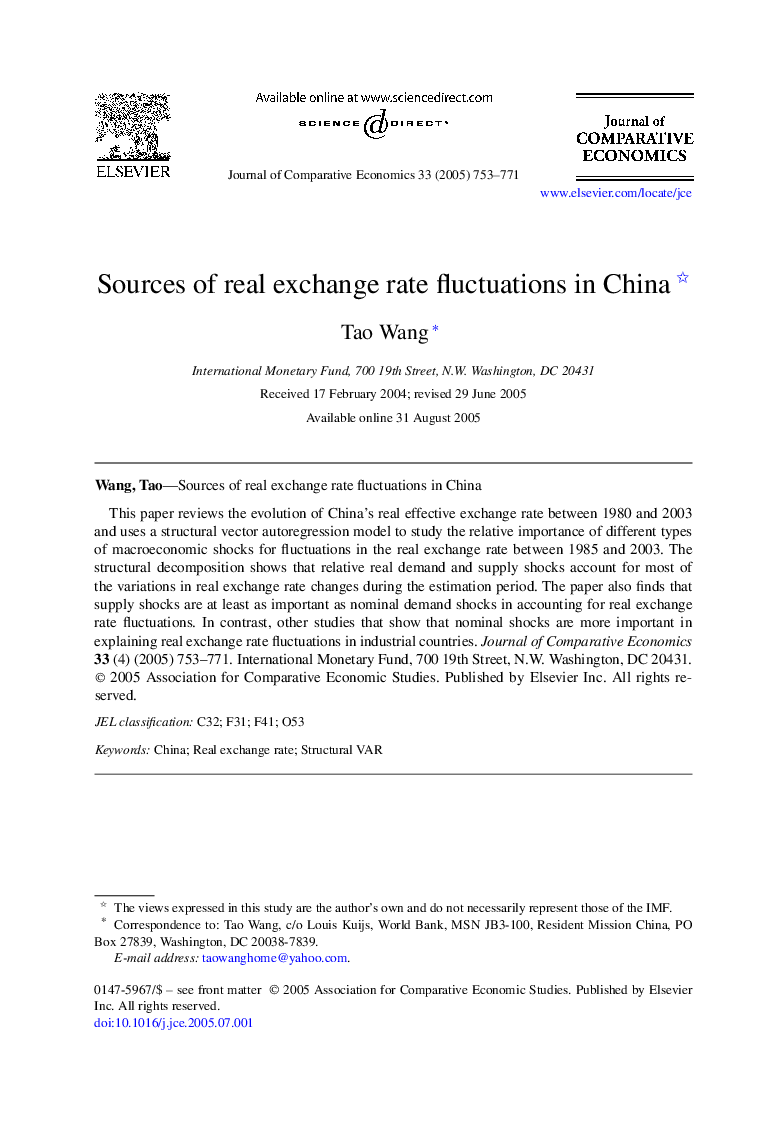| Article ID | Journal | Published Year | Pages | File Type |
|---|---|---|---|---|
| 9554534 | Journal of Comparative Economics | 2005 | 19 Pages |
Abstract
This paper reviews the evolution of China's real effective exchange rate between 1980 and 2003 and uses a structural vector autoregression model to study the relative importance of different types of macroeconomic shocks for fluctuations in the real exchange rate between 1985 and 2003. The structural decomposition shows that relative real demand and supply shocks account for most of the variations in real exchange rate changes during the estimation period. The paper also finds that supply shocks are at least as important as nominal demand shocks in accounting for real exchange rate fluctuations. In contrast, other studies that show that nominal shocks are more important in explaining real exchange rate fluctuations in industrial countries. Journal of Comparative Economics33 (4) (2005) 753-771.
Related Topics
Social Sciences and Humanities
Economics, Econometrics and Finance
Economics and Econometrics
Authors
Tao Wang,
